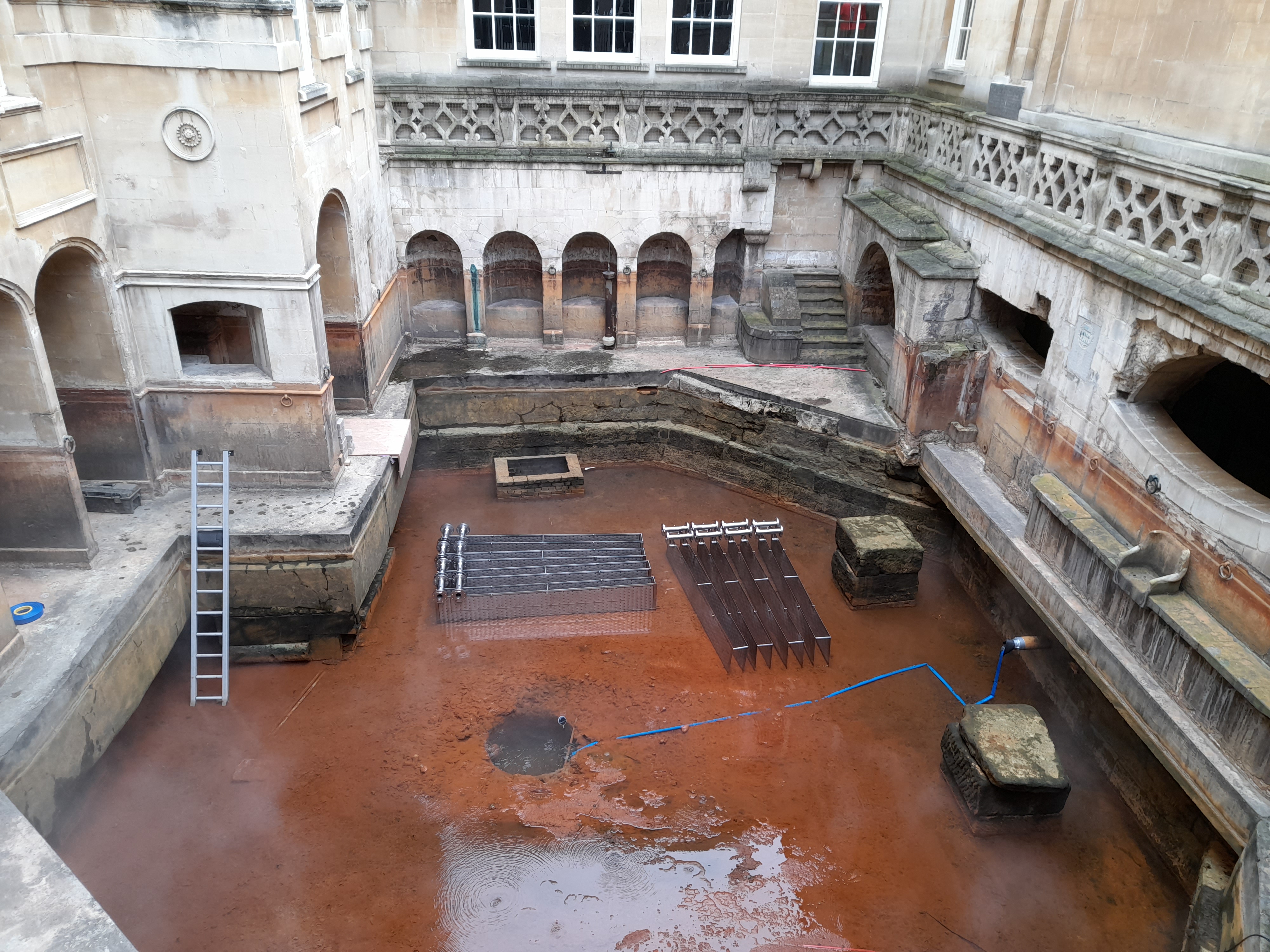
An innovative scheme to harvest heat from the naturally hot spa water at the Roman Baths and use it to heat surrounding buildings is entering its final phase.
Heat from the King’s Spring will be used to heat the Roman Baths and Pump Room, as well as the soon-to-open Bath World Heritage Centre and Roman Baths Clore Learning Centre.
Sixteen three-metre-long energy exchange blades will be inserted into the King’s Bath between 28 February and 9 March, and a new plant room is being created beneath Stall Street.
Most of the project, which involves working in underground vaults, has been delivered outside the public eye. The first phase of works was completed in 2020 when the council took advantage of the closure of the Roman Baths due to Covid-19 to insert pipework throughout those parts of the building that are normally open to the public.
Councillor Dine Romero, Cabinet Member for Children and Young People, Communities and Culture at Bath & North East Somerset Council, said: “The project will deliver on the council’s promise to respond to the climate emergency by significantly reducing the carbon footprint of these major civic buildings. It will also achieve a financial saving over its more than 20-year lifespan.”
Amanda Hart, Roman Baths and Pump Room Manager, added: “Bath’s naturally hot spa water has been used in many ways throughout history, and it’s fantastic that we can now harvest the heat from it to help reduce our carbon footprint. In installing the scheme, great care has been taken to protect the integrity of the springs, the Roman archaeology and other historic fabric.”
John Standivan, Senior Mechanical Engineer for the consultant engineers Buro Happold, said: “The city’s hot spring water presents an ideal opportunity to provide a sustainable heating system for the Roman Baths. The water is technically quite difficult to use but after plenty of analysis and lots of studies, the Buro Happold team is delighted to have helped deliver this world leading scheme for our home city.”
Ed Levien, Commercial Director of Isoenergy, the contractors installing the system, said: “It has been great to be involved in this project alongside Buro Happold for the last seven years. Once complete it will deliver significant carbon savings to BathNES and will be the second Isoenergy heat pump project in Bath taking advantage of the thermal spring water, the other being Bath Abbey next door.”
The project replaces a much smaller heat exchange scheme installed in 1993.






